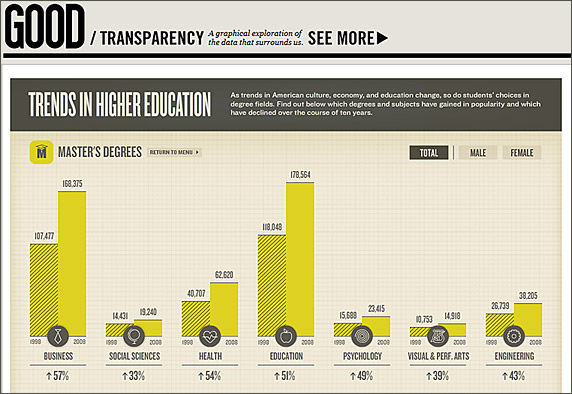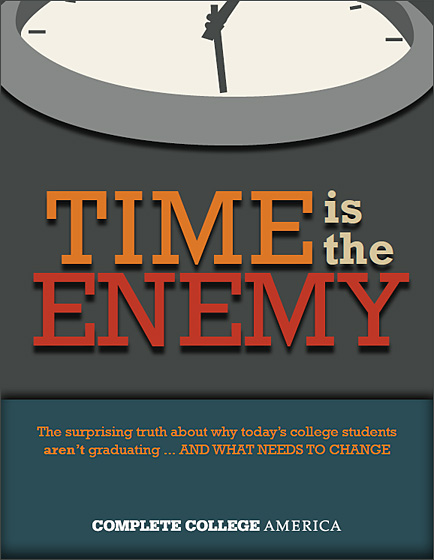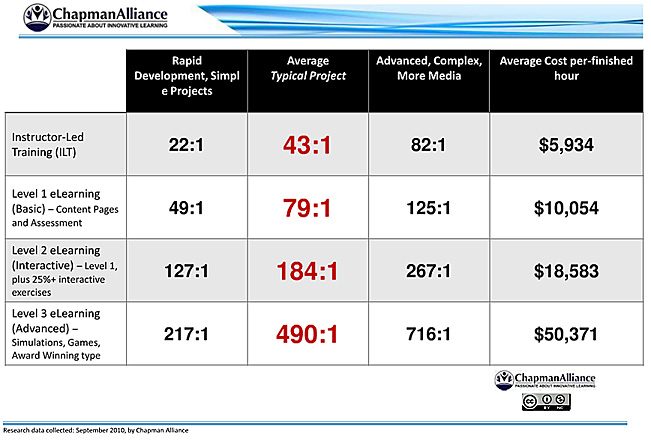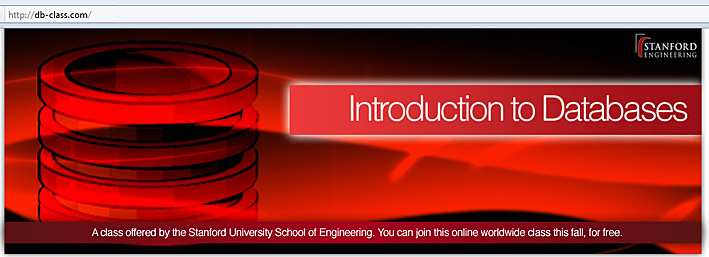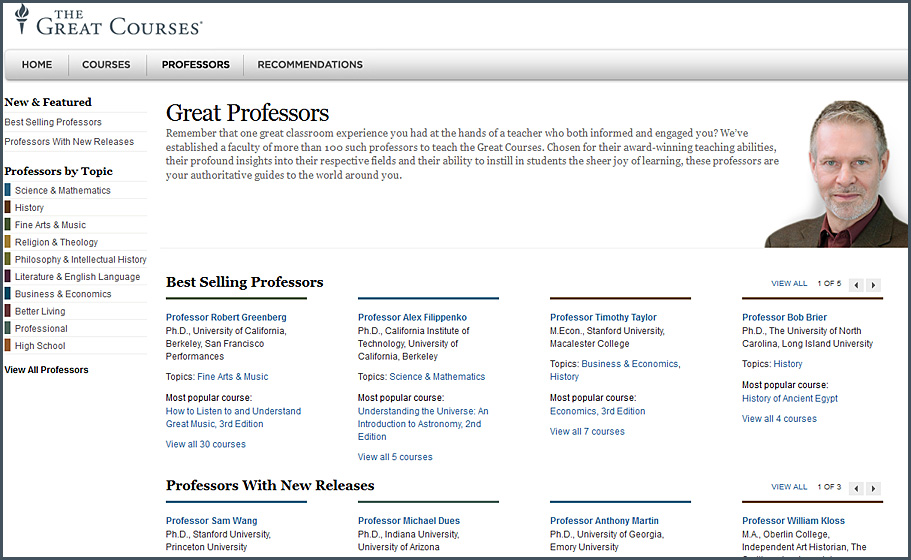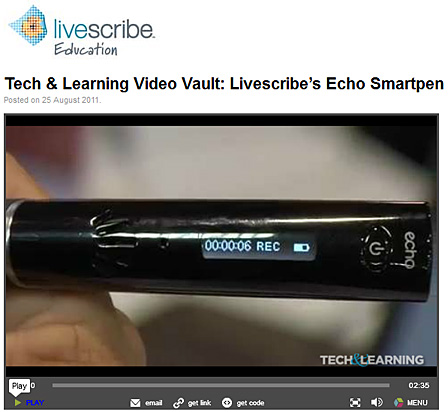Resources for finding out how long it takes to develop eLearning — from kaplaneduneering.com by Karl Kapp
From DSC:
One resource mentioned was from the Chapman Alliance, from September 2010, of which these figures are from:
Also see:
- The NMC Announces New Horizon Report Series of Regional Analyses
Under the umbrella of the NMC Horizon Report, The NMC has launched the Technology Outlook, a new series of regional analyses aimed specifically at understanding both local and global differences in technology uptake, as well as the current and future state of education in different parts of the world. These publications are a product of collaborations between the NMC and innovative organizations across the world that seek to leverage the well-known medium of the NMC Horizon Report to bring important research, trends, and challenges in their regions to light. The Technology Outlook series furthers the NMC’s goal of driving innovation in every part of the world.
An A to Z list of Michigan colleges and universities — from mlive.com
Stanford University is offering Computer Science courses online, free to anyone — from geekosystem.com by Max Eddy
A bold experiment in distributed education, “Introduction to Databases” will be offered free and online to students worldwide during the fall of 2011. Students will have access to lecture videos, receive regular feedback on progress, and receive answers to questions. When you successfully complete this class, you will also receive a statement of accomplishment. Taught by Professor Jennifer Widom, the curriculum draws from Stanford’s popular Introduction to Databases course. A topics list and many of the materials are available here. More information about the Stanford course can be perused here. Details on the public offering will be available by late September. Sign up below to receive additional information about participating in the online version when it becomes available.
Also see the video at:
Introduction to Databases class by Stanford University
A bold experiment in distributed education, “Machine Learning” will be offered free and online to students worldwide during the fall of 2011. Students will have access to lecture videos, lecture notes, receive regular feedback on progress, and receive answers to questions. When you successfully complete the class, you will also receive a statement of accomplishment. Taught by Professor Andrew Ng, the curriculum draws from Stanford’s popular Machine Learning course. A syllabus and more information is available here. Sign up below to receive additional information about participating in the online version when it becomes available.
Also see the video at:
Machine Learning: About the class
From DSC:
Again, my question is…if these trends continue, what opportunities are presenting themselves? What threats are presenting themselves? What is our response? How will colleges/universities differentiate themselves in this developing landscape? If items like the below continue to grow…how do we respond?
Addendum later on 8/29/11:
- Also see iversity raises $1.6 million – Wants to bring Campus Experience Online — from edukwest.com by Kirsten Winkler
The Digital Revolution and Higher Education — from the Pew Research Center by Kim Parker, Amanda Lenhart, and Kathleen Moore
College Presidents, Public Differ on Value of Online Learning
Excerpt:
This report is based on findings from a pair of Pew Research Center surveys conducted in spring 2011. One is a telephone survey of a nationally representative sample of 2,142 adults ages 18 and older. The other is an online survey, done in association with the Chronicle of Higher Education, among the presidents of 1,055 two-year and four-year private, public, and for-profit colleges and universities.
Here is a summary of key findings…
From DSC:
First, [perhaps it’s in the appendices, but] how many of the people out in the public who were surveyed have actually taken an online class? If so, how many classes (each) have they taken and when did they take them? From whom did they take them? My guess is that most of them have never taken a class online.
Secondly, I wonder how many people thought that the telephone was a useful instrument/communication device shortly after it was introduced? Perhaps not too many…but did you use one today? Yesterday? I bet you did. I did…several times; and I bet that the same will be true of online learning (as online learning didn’t really begin to be used until the late 90’s).
The question is not whether online learning will blow away the face-to-face classroom, it’s when this will occur…? There will be many reasons for this, but the key one will be that you are putting up a team of specialists instead of using just one person. If they are reeeeaaaalllyy good (and a rare talent), that person can do the trick for now; but their success/job will continue to be increasingly difficult to perform, as they continue to pick up new hats each year, as the students’ attention spans and expectations continue to change, as lower cost models continue to emerge, etc, etc…
As Christensen, Horn, and Johnson assert, the innovation is taking place in the online learning world, and it will eventually surpass what’s possible (if it hasn’t already) in the face-to-face classrooms.









![InteractiveData-UofPandGOOD2-9-2011 Interactive Infographic: Trends in Higher Education [Good; U of Phoenix]](http://danielschristian.com/learning-ecosystems/wp-content/uploads/2011/09/InteractiveData-UofPandGOOD2-9-2011.jpg)
